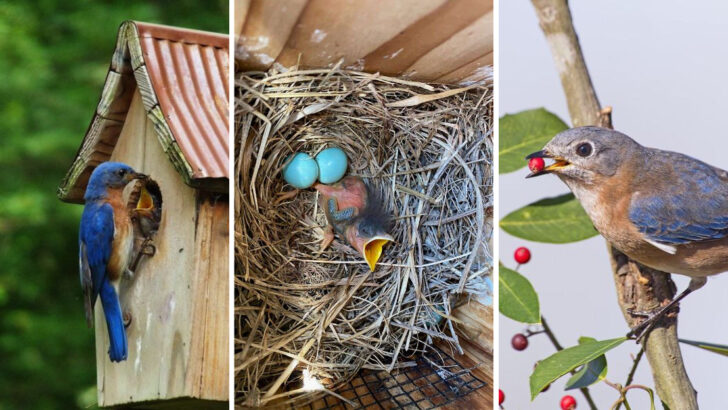Your garden is missing something. Not more flowers, not another fancy bird feeder—what you need is a flash of dazzling blue, a sweet song drifting through the air, and the joy of watching bluebirds make your space their home.
These feathered gems don’t just show up uninvited. They’re picky, a little particular, and completely worth the effort. Give them the right nesting spot, a fresh water source, and a buffet of their favorite treats, and suddenly, your backyard transforms into a bluebird paradise.
No need for guesswork—we’ve got 13 foolproof ways to roll out the welcome mat for these stunning birds. Whether you’re a seasoned bird enthusiast or just starting out, these tips will make your garden irresistible. Ready to bring the bluebirds to you? Let’s dive in!
Choose the Right Nesting Box
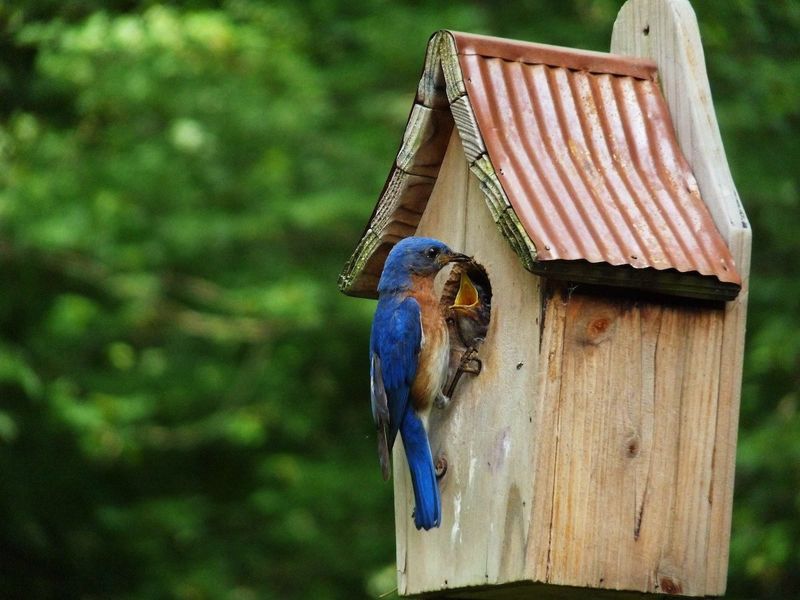
Bluebirds prefer a specific type of nesting box, typically made of wood and featuring a small entrance hole about 1.5 inches in diameter. Ensure the box is mounted on a pole, five to six feet above the ground, and placed in an open area with a clear flight path. Regularly inspect and clean the box to keep it inviting. Placing the box in a sunny spot can help it stay dry and warm, making it more appealing to bluebirds. An effective design will include proper ventilation and drainage holes to ensure the nest remains comfortable.
Provide Fresh Water
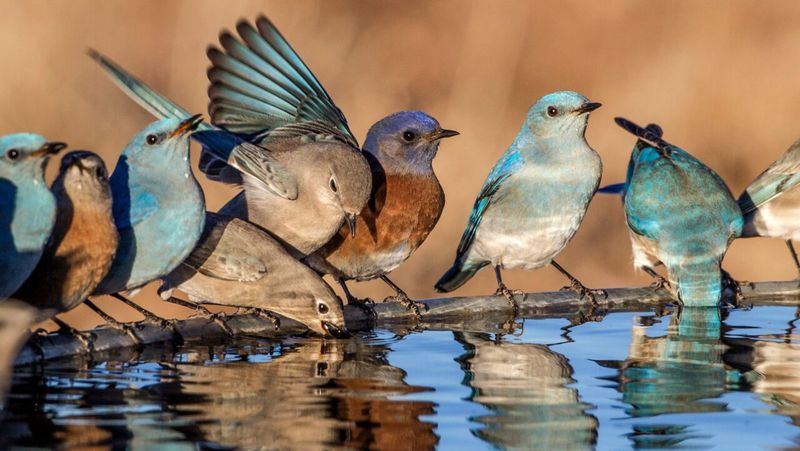
Water is essential for attracting bluebirds, as it serves as a source for drinking and bathing. Install a birdbath, ideally with a shallow basin, in your garden to offer bluebirds a reliable water source. Position the birdbath where it is easily visible to the birds and away from any potential predators. Keep the water clean and fresh by changing it regularly, especially during hot weather. Adding a small fountain or dripper can create moving water, which is particularly attractive to bluebirds. This simple addition can make your garden irresistible to them.
Plant Native Berry Bushes
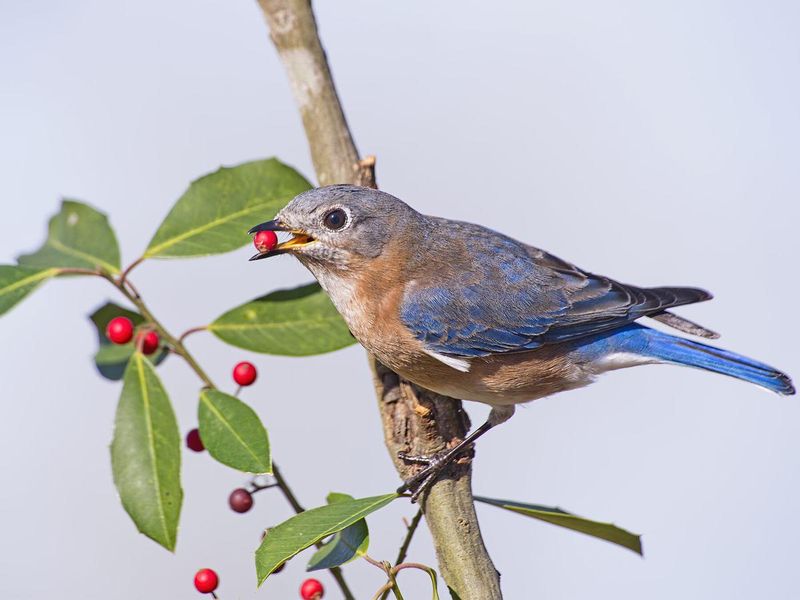
Bluebirds are fond of berries, making native berry bushes an excellent choice for your garden. Consider planting species such as serviceberry, dogwood, or elderberry, which provide both food and shelter. These plants will not only attract bluebirds but also support other wildlife. Planting a diverse range of berry bushes ensures a year-round food supply, enhancing the possibility of attracting different bird species. Ensure the bushes are spaced adequately to allow bluebirds to forage comfortably. Maintaining these plants can transform your garden into a wildlife haven.
Offer Mealworms
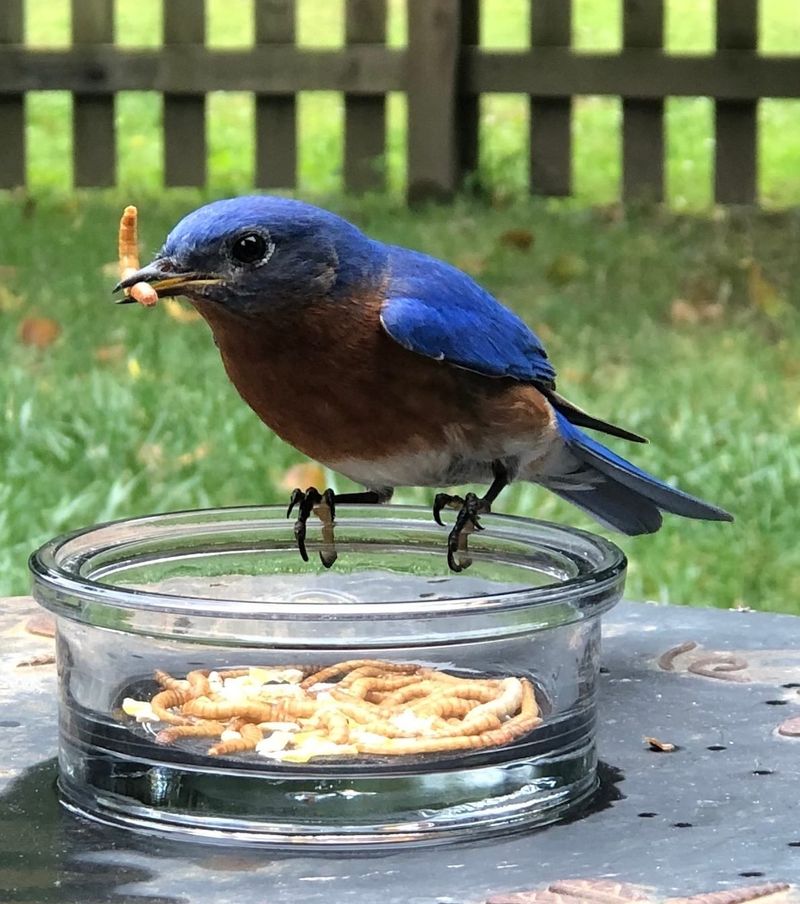
Mealworms are a favorite treat for bluebirds, rich in protein and easy to offer. Purchase live or dried mealworms and place them in a shallow dish within your garden. Start by offering them in small amounts to gauge interest, gradually increasing the quantity as bluebirds discover this tasty snack. Position the feeding dish in an open area, easily accessible to the birds. Offering mealworms regularly can encourage bluebirds to visit frequently and may even entice them to nest nearby. This nutritional treat is a wonderful way to support these lovely birds.
Avoid Pesticides
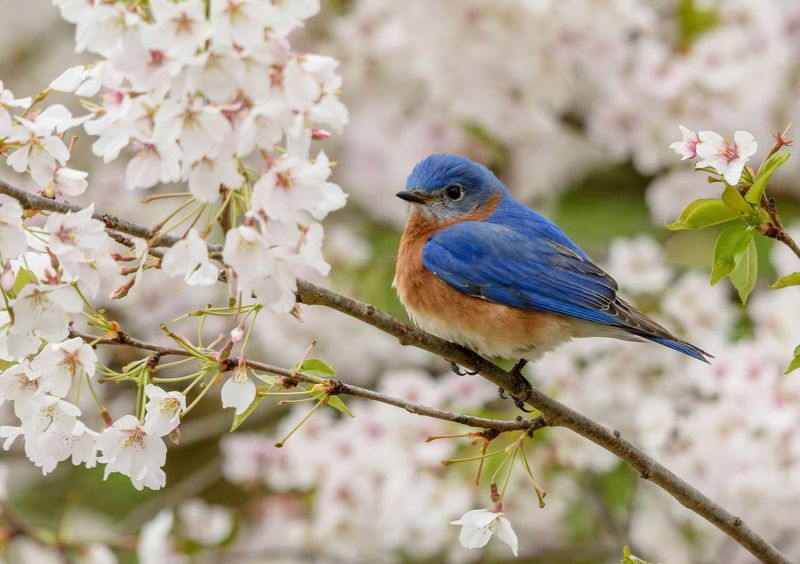
Creating a pesticide-free garden is crucial for attracting bluebirds, as these chemicals can harm their food sources. Bluebirds primarily feed on insects, so maintaining a natural environment will support their dietary needs. Encourage a healthy insect population by planting a variety of native plants that attract bugs. By eliminating pesticides, you ensure a safe habitat for bluebirds and promote biodiversity. This approach not only benefits bluebirds but also enhances the overall ecosystem of your garden, making it a vibrant and thriving space. Embrace natural pest control methods for a harmonious environment.
Ensure Open Spaces
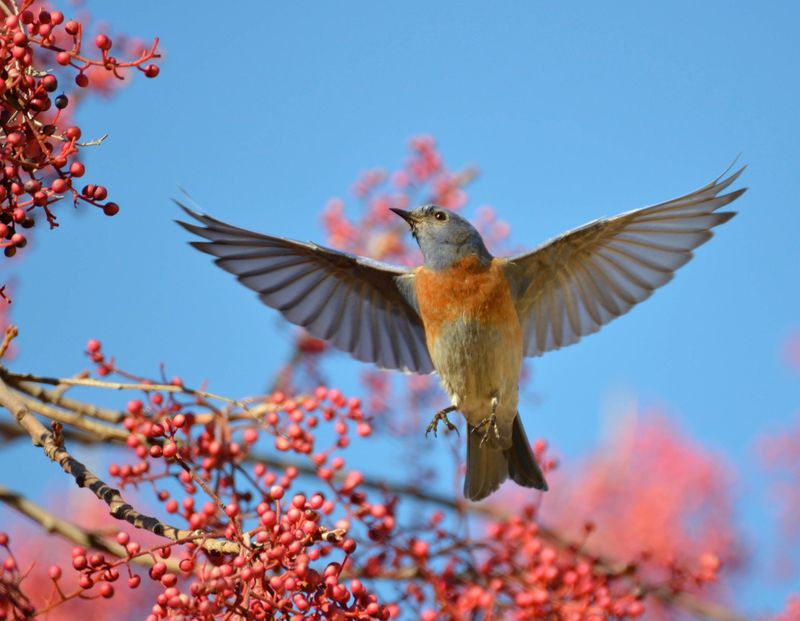
Bluebirds thrive in open spaces, which allows them to easily spot predators and forage for food. Maintaining an open area in your garden is key to attracting these birds. Avoid dense plantings and instead create a landscape that features lawns or meadows bordered by trees and shrubs. This setup provides bluebirds with the visibility they need while offering perching spots for resting and hunting. Open spaces also facilitate easier access to nesting boxes, making your garden more inviting. Balance is crucial, so aim for a mix of openness and natural cover.
Install Perching Spots
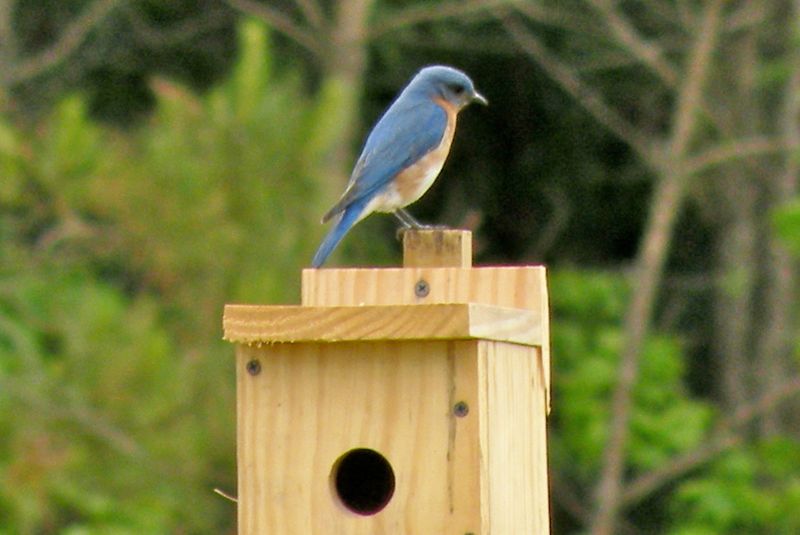
Perches are vital for bluebirds, offering places to rest and survey their surroundings. Install perching spots like wooden stakes or branches throughout your garden to cater to this need. These perches should be placed at varying heights to accommodate different activities, such as hunting insects or socializing. Natural materials blend seamlessly with the garden environment, providing a rustic charm. Regularly check and maintain these perches to ensure they remain sturdy. By offering ample perching opportunities, you make your garden an attractive hub for bluebirds, encouraging their continued presence.
Keep Cats Indoors
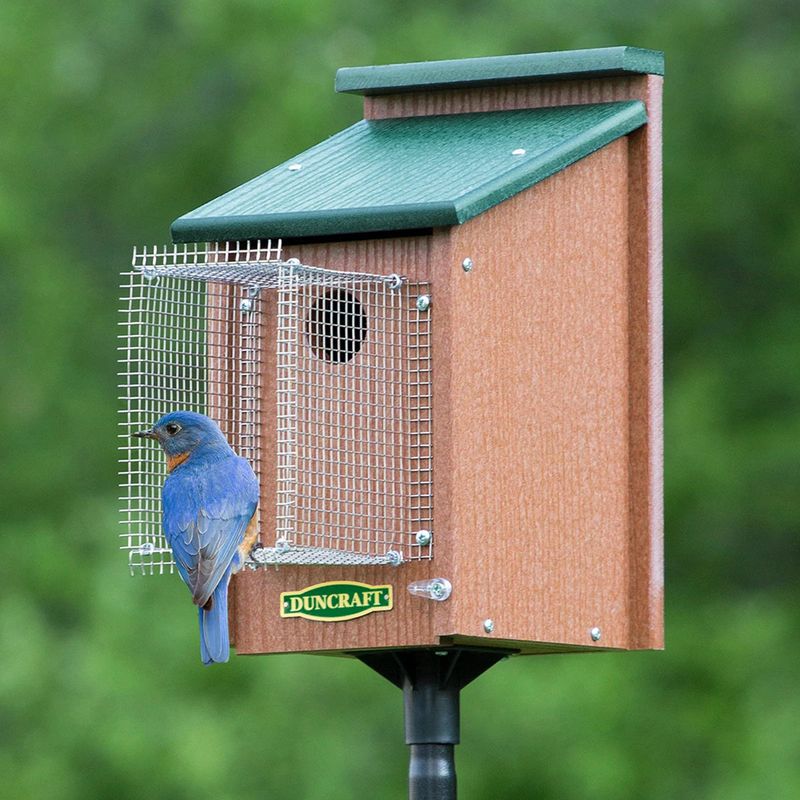
Cats pose a significant threat to bluebirds and other wildlife. To protect these beautiful birds, it’s crucial to keep cats indoors or supervised when outside. By doing so, you prevent potential predation, allowing bluebirds to safely visit your garden. If you can’t keep cats inside, consider installing cat-proof fencing or providing outdoor enclosures for them. Educating neighbors about the dangers cats pose to birds can also promote a safer neighborhood. This simple step can have a profound impact on the safety and well-being of bluebirds, making your garden a sanctuary.
Add Nesting Materials
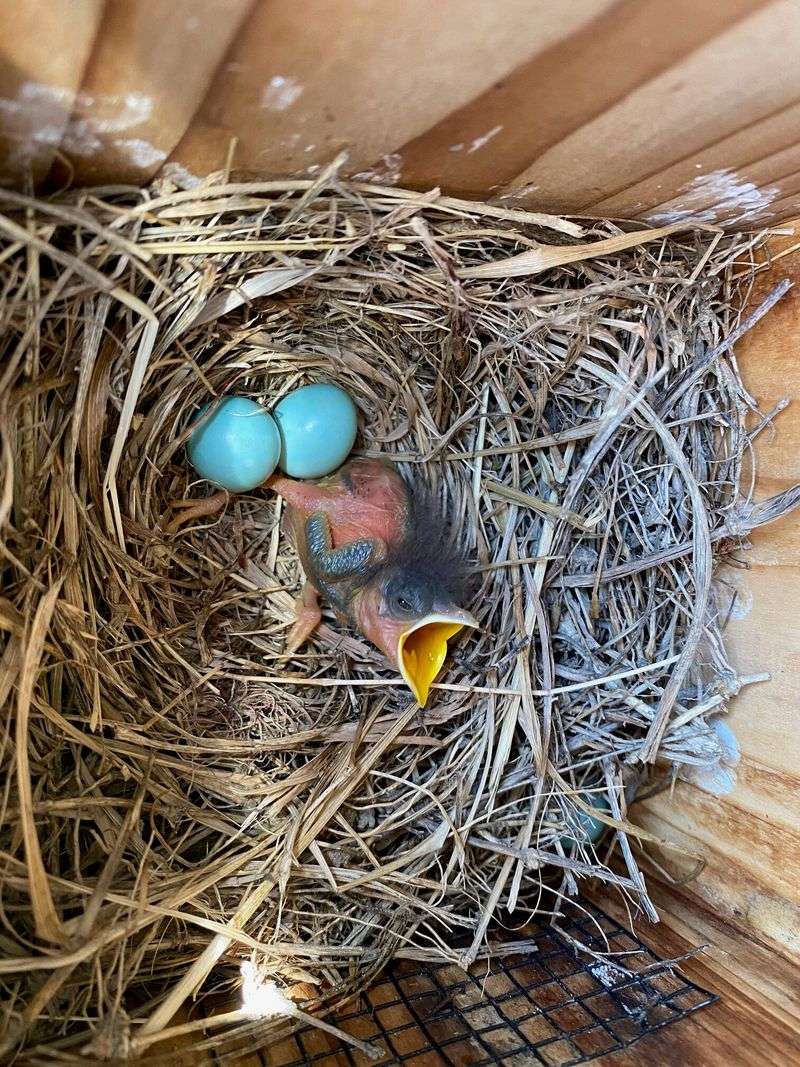
Providing nesting materials can entice bluebirds to build their homes in your garden. Offer natural materials such as small twigs, dry grass, or feathers in a basket or scattered nearby. Place these materials in a sheltered area close to nesting boxes to encourage use. Avoid artificial materials like plastic or yarn, which can be harmful to birds. Ensuring a supply of safe and accessible nesting materials can increase the likelihood of bluebirds choosing your garden as their nesting site. This thoughtful gesture supports their natural behaviors and enhances your garden’s appeal.
Create a Safe Environment
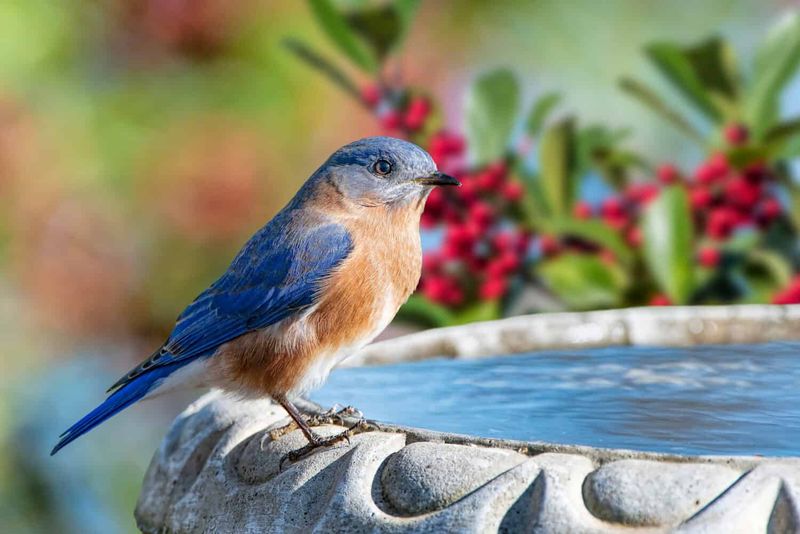
A safe and serene environment is vital for attracting bluebirds. Minimize disturbances by reducing noise and avoiding sudden movements near nesting areas. Ensure your garden is free from hazards such as reflective surfaces or loose wires that could harm birds. Plant bird-friendly greenery that offers cover and protection from predators. By creating a sanctuary-like atmosphere, you make your garden a preferred destination for bluebirds. This environment not only attracts bluebirds but also fosters a sense of peace and tranquility for all garden visitors, human and avian alike.
Utilize Bird Feeders
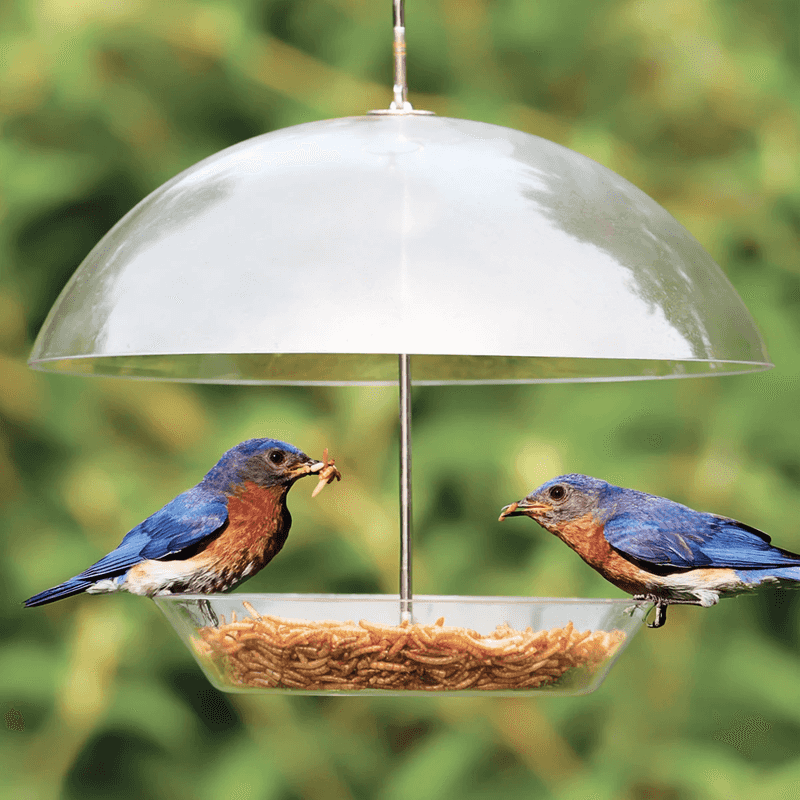
While bluebirds primarily eat insects, they may occasionally visit feeders for seeds, especially in winter. Use a feeder designed to accommodate bluebirds, stocked with suitable seeds like sunflower or suet. Place the feeder in a visible location, ideally near perches or nesting boxes. Keep it clean and replenished to maintain interest. Feeders can complement other food sources, ensuring bluebirds have ample nutrition. They also attract other bird species, increasing garden biodiversity. Incorporating feeders into your bluebird attraction strategy can bolster your efforts and create a lively bird-watching experience.
Monitor Regularly
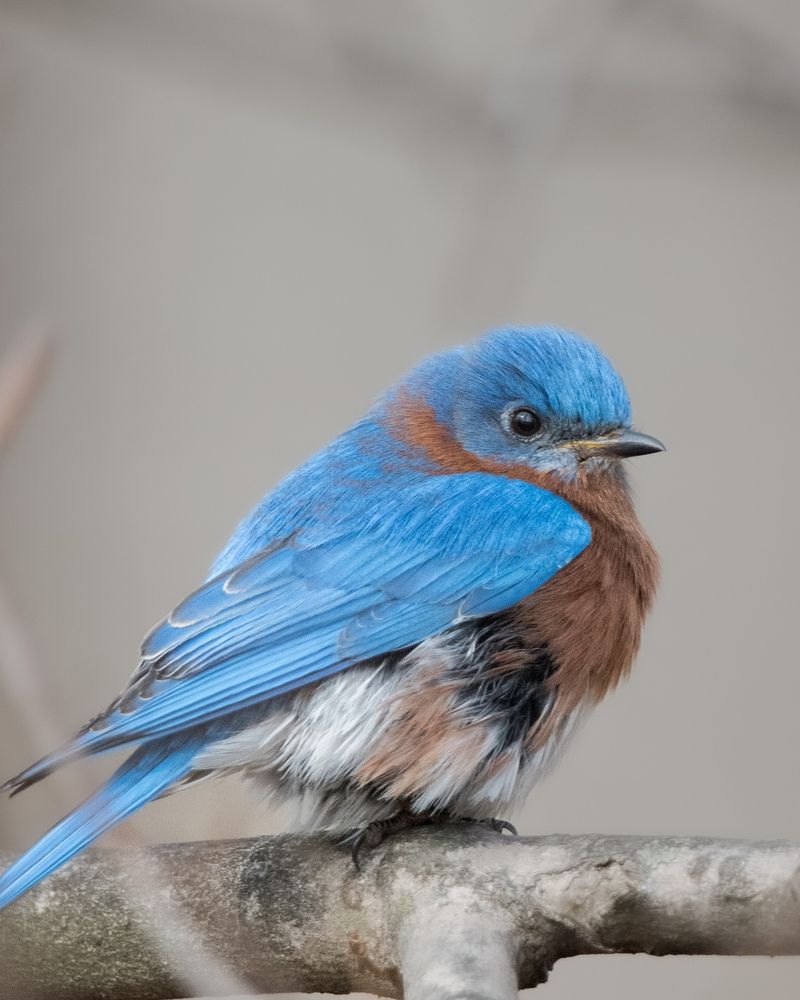
Regular monitoring is essential to understanding the habits and needs of the bluebirds visiting your garden. Spend time observing their behaviors, noting which features they favor and any potential threats. Use binoculars to watch from a distance, minimizing disturbance. Regular monitoring can help you adjust your garden setup to better cater to bluebirds’ preferences. Keeping a journal of sightings and interactions can enrich your bird-watching experience. This proactive approach ensures your garden remains a welcoming haven for bluebirds, fostering a deeper connection with these captivating creatures.
Engage with Community
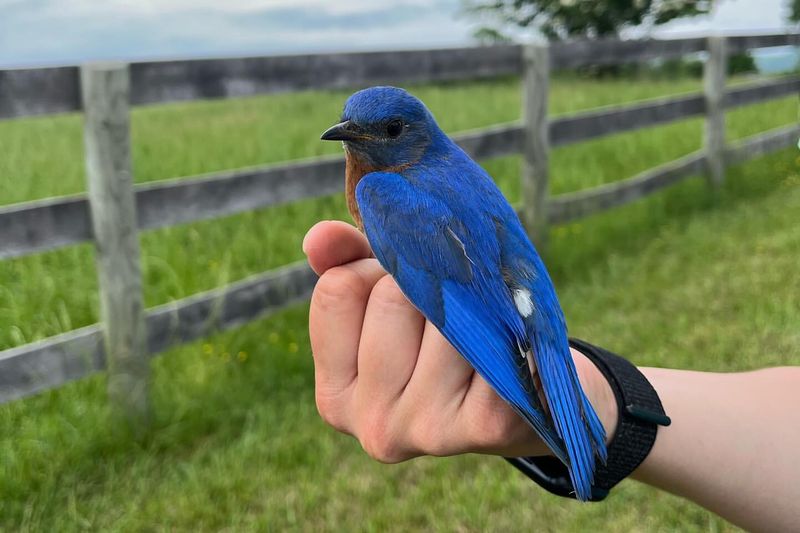
Engaging with fellow bird enthusiasts and neighbors can enhance your efforts to attract bluebirds. Share tips and experiences, and learn from others who have successfully attracted these birds. Community involvement can lead to collective efforts in creating bird-friendly environments across neighborhoods. Organize garden tours or bird-watching events to raise awareness and exchange knowledge. By fostering a sense of community, you not only benefit bluebirds but also build connections with like-minded individuals. This shared passion can lead to collaborative projects and a stronger commitment to wildlife-friendly gardening.

